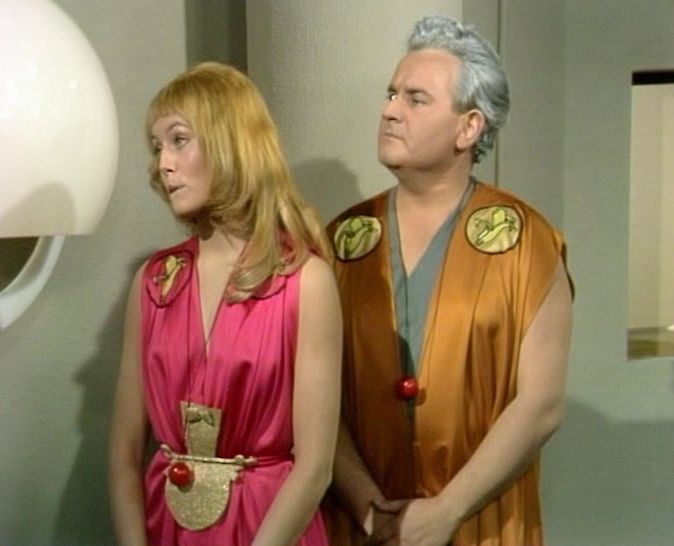
The year is 2274 and comedy is now a religion with Chaplin, Keaton and W.C. Fields revered as gods. Life is an endless stream of corny jokes, but Prince Boffo (Barker), shortly to ascend to the throne, is increasingly dissatisfied with this. His wife, Princess Hysteria (Joyce Grant), is baffled to learn that Boffo’s lost his sense of humour, but his daughter, Cheeky (Lesley Anne-Down) is more sympathetic. Is Boffo fit to be King? That’s for the Arch Funster (Michael Horden) to find out ….
Written by Barker (under his regular pseudonym of Gerald Wiley), All the World’s a Stooge is an intriguing and vaguely experimental sci-fi story. No expense was spent to bring 2274 AD to life, although it’s possible this was an intentional nod to series such as Out of the Unknown, which also tended to depict future times on a shoestring budget. And even if it wasn’t, it works anyway – flimsy looking sets and lashings of CSO just seem to be right for this type of story.
Did this obscure little playlet influence future writers? It’s easy to see parallels in several later Doctor Who stories. Vengeance on Varos also featured a couple who provide a running commentary on events, watching via their television screen (here it’s Joy Stewart and Victor Maddern as Tarty and Atlas). And The Happiness Patrol could easily be depicting a sister world to this one.
Ronnie Barker loved corny gags and would later recycle many of them in the Two Ronnies Yokels sketches. I’ve no doubt he enjoyed giving the old jokes featured here another airing, but there was also room to air a serious point. This sort of humour becomes mechanical over time, with no joy to be gained from the responses and punchlines. Boffo wants a world where humour is natural and unforced and it appears by the end of the episode that he’s got his wish, even if most of the planet (including his wife) don’t understand this and are simply glad he appears to be his old, funny self again.
A strong guest cast helps to enhance Wiley’s script. Horden looks to be enjoying himself as the Arch Funster, especially when doing the Groucho walk. Lesley-Anne Down is very appealing as Boffo’s idealistic daughter whilst Jack Tripp also impresses as the doctor who tells Boffo that his father is dead (“do you know what’s good for water on the brain? A tap on the head”).
Although it features a couple of indifferent instalments, overall Six Dates with Barker is a pretty strong series. A few years later, after Barker moved back to the BBC, they did something similar with Seven of One, although that would produce both of Barker’s biggest sitcom successes …







